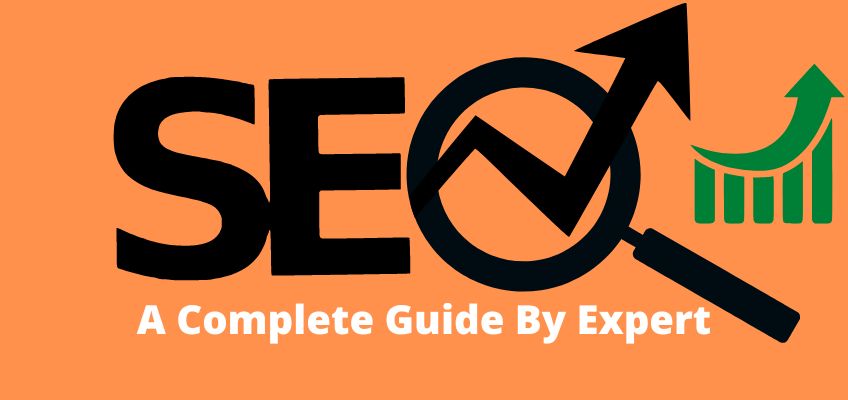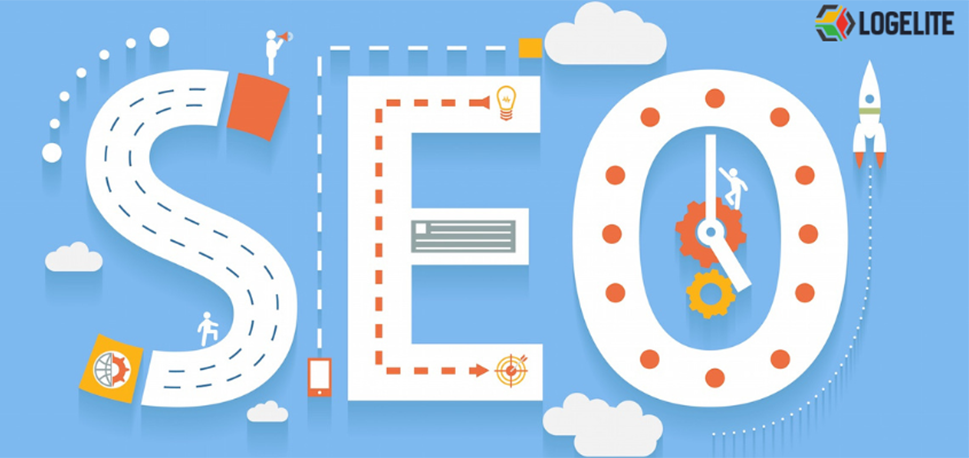What is SEO? A Complete Definition
Optimizing a website, also known as SEO (Search Engine Optimization), is the practice of structuring your website’s pages. It makes it easier for search web spiders to crawl your site, provide an optimal user experience, and provide unique information or valuable resources on a topic that searchers are looking for.
This improves rankings in the SERPs (search engine results pages). When you create unique, informative, educational, and optimized content, your pages will most likely naturally rise in the SERPs. This will result in both new and increased traffic to your website.
Why do I require SEO?
As more businesses, products, services, education, and other activities move online; there is a growing interest in learning SEO techniques and strategies to rank higher for essential pages. If you’re reading this blog, you’re probably interested in learning how to perform Search Engine Optimization yourself.
According to statistics, 28.5 percent of users click on the first organic SERP, 15.7 percent on the second, and 11 percent on the third. Paid advertisements are clicked on by less than 10% of searchers. Why? Because users do not believe them. As a result, SEO is critical to the success of your website.
However, SEO does not only aid in the success of your website. Users have a better overall experience when your site is optimized. When you focus on page speed, for example, a search engine ranking factor, Google will reward your site for loading quickly.
On the other hand, search engines will penalize your site if it takes too long to load. Slow-loading pages, pages that don’t provide valuable answers but are keyword-stuffed, an unresponsive website, and so on.
What is the significance of SEO?
So, why is Search Engine Optimization important, and if it is, how important is it to your industry or business? The organic channel accounts for 53% of all web traffic and is expected to outperform other search traffic yearly. Not only is the organic traffic channel expanding, but SEO has no media cost. SEO can provide a significant ROI if that isn’t enough to pique your interest.
How To Become A Social Media Marketer? A Complete Guide

You can improve your rankings by creating unique content that is also well-optimized. You will drive traffic as they grow. The more traffic you have, the more likely a user will become a customer. As the organic channel expands, it is also critical for SEOs and digital marketers to expand. Understanding the “why?” behind Search Engine Optimization is just as important as learning the basics.
Google’s algorithm is constantly evolving, with new updates released daily. Why? Because Google, Bing, Yahoo, and other search engines want to deliver their users the best possible experience. As a result, it is critical to creating content for humans rather than bots.
How to do SEO In 2022? A Simple Guide
A professional is not required for search engine optimization. Companies with small-to-medium-sized websites and an SEO-friendly content management system or eCommerce platform can handle a large portion of the Search Engine Optimization work in-house. Here are my top ten do-it-yourself SEO suggestions:
- Conduct a Site Audit
- Research Keywords
- Identify Keyword Gaps
- Build Internal Links
- Improve Click-throughs
- Optimize Title Tags
- Create Useful Content
- Update Old Content
- Monitor Google Analytics and Search Console
- Build Link Equity
Types of SEO
There are two types of SEO:
On-page SEO: It refers to anything on your website’s pages, such as blogs, product copy, and web copy.
Off-page SEO: It refers to anything that occurs away from your website that aids your SEO strategy, such as backlinks.
Let’s look into On-page and Off-Page in more detail: –
What is on-page SEO?
On-page SEO refers to all optimizations that can be done to the front end of a page using HTML source code. It includes everything involved in providing readers with the best possible user experience. Understanding on-page tactics are critical to comprehending SEO in general and how it operates.
On-page SEO consists of the following components:
- Tags for titles
- H1, H2, and H3 tags
- Anchor text for images
- Density of keywords
- Descriptions of metadata
- Meta Description
- Tags\URLs
The following are some best on-page Search Engine Optimization Techniques:
- Create well-developed, unique, fresh content that adds real value to users.
- In the URL, titles, subtitles, and body include the keyword.
- Create descriptive and engaging meta descriptions and titles to clarify content and encourage clicks from search engine results pages.
- Use a layout that allows visitors to read your content easily.
- Work on increasing page speed.
- Optimize image alt text and file names that include the topic keyword.
Best On-page SEO Tools in 2022
Ahrefs: Complete Tool For Competitor Research And Link Building
If you’ve been in the SEO game for a while, you’ve probably heard of Ahrefs. Many expert marketers use this tool to rank their websites. Ahrefs offers all-in-one solutions that improve over time. The Ahrefs paid version’s resources are rich in in-depth research and knowledge.
4 Key Features Of the Ahref Seo Tool
- With over 7 billion keywords, you can find keywords for Google, YouTube, Amazon, Bing, and Yahoo.
- Get a report on the health of your backlinks.
- The SERP analysis feature returns the domain rating, URL rating, and total backlinks of the top 10 pages ranking for your keyword.
- It makes it simple to find top-performing content in the chosen niche.
SEMrush
SEMrush is an all-in-one Search Engine Optimization toolkit. You can use this tool to improve your SEO and paid advertising efforts. SEMrush software is a digital marketing tool that gives the company online visibility and higher-ranking tools.
7 Key features Of the Semrush Tool
- SEMrush can be used to find PPC keywords.
- Determine the most profitable keywords for your website.
- Enter a keyword into the tool to generate thousands of combinations.
- Examine your content’s SEO, originality, and readability scores.
- Learn how to improve your content and SERP ranking.
- Check your website’s ranking and create a strong paid search campaign.
- Get a detailed backlink report.
PageSpeed Insights
Your website’s speed is critical for both Google and the user experience. The website must load within 2 seconds to not degrade the visitor’s experience. PageSpeed Insights can help you improve the speed of your website. PSI provides more information about page speed by calculating various matrices from the submitted URL.
2 Key features Of Page Speed Insight
- Instant analysis of your website’s speed on mobile and laptop devices.
- Enabling a detailed report of the bugs causing your website to crash.
Seobility
Seobility will identify all of the problems on your website. It’s also very simple to use. Enter your website’s URL to receive a detailed report. It is regarded as one of the most effective free on-page SEO checkers. Seobility is an all-in-one tool platform with simple integration.
6 Key features of Seobility
- Examine your SEO ranking.
- Determine any on-page SEO issues.
- Find problems with your title, meta description, and page URLs.
- The tool will also alert you to issues with page speed and duplicate content.
- Seobility also determines whether or not the website is responsive.
- The tool displays your website’s link profile and specific server errors.
What is off-page SEO?
Off-page SEO refers to all of your site’s activities that occur outside of your domain. It contains all of the Search Engine Optimization elements and techniques used to demonstrate the value and reputation of your site from external digital presences such as reputable websites, directories, and more.
The following are examples of off-page SEO elements:
- External hyperlinking
- External link anchor text
- Mentions of a brand
- Influencer campaigns
- Social media guest blogging or writing
To gain an advantage over your competitors, implement the following off-page Search Engine Optimization techniques:
- Learn how to cultivate high-quality backlinks from other websites.
- Create internal links with anchor text from other pages in your domain or other sites you manage.
- Create content for publications such as guest blogs, from which you can link back to your website.
- Include your company in any relevant directories.
- Increase your social media presence.
- The must-have Off-page SEO Tools in 2022
SEOquake
There are numerous google chrome extensions available that provide separate metrics on the web page you are viewing. Still, SEOquake provides most of what you require under one roof, including page rank, domain age, Cache date, social shares, and more.
SEOquake also works in search engine results pages, allowing you to see metrics for every website from a single page, and it has a handy option that highlights nofollow links with a strikethrough.
BuzzStream
Buzzstream is a tool for managing.
- A) Off-page link building
- B) public relations and social media.
Media popularity has resulted in millions of micro-influencers conversing about products and services across the social web. Customers’ key to getting found is building and effectively managing relationships with these influencers.”
People’s shopping habits and product knowledge have changed dramatically due to the evolution of search engines and the introduction of social media. What exactly does BuzzStream do? The goal is to bring order to the chaos of developing authentic relationships with social media marketers.
Contentbird
Contentbird is a tool that serves as a general information and data tracking hub for SEOs, but I believe it primarily favors link building. From start to finish, almost every step of the link-building process is integrated into Contentbird. It has a link prospecting tool that automates most of your work.
You can then send outreach from within the tool and track its progress from pending to successful. The outreach feature also allows you to save templates and automatically pull in information about the person/site you’re contacting, allowing you to personalize each email for the recipient easily.
Conclusion
This blog has covered some of the fundamentals of Search Engine Optimization and how to get the most out of your website’s traffic. We’ve shown you what SEO stands for and why it’s essential for your website’s success.
Then we dissected SEO techniques both on-page and off-page. We’ve discussed SEO tools and how they can help your website increase traffic by creating content, making it easy to navigate, and making your website easily searchable on the internet by optimizing all posts with tags and metadata.

Comment
Write a Reply or Comment